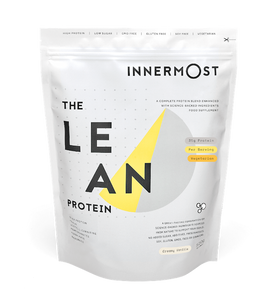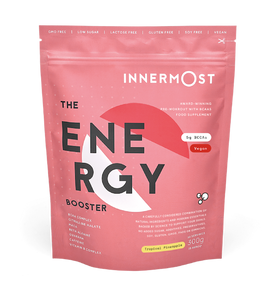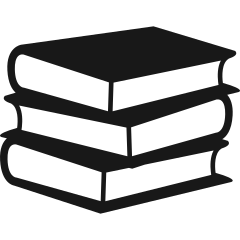The temperature of your shower is one of those controversial subjects that always sparks a bit of a debate amongst friends and colleagues. Whilst some people like to feel the burn, turning their showers up to what feels like boiling-point, others enjoy the complete opposite, waking themselves up with a freezing cold shower.
Whilst everyone has their own personal preference (and we’re not judging), there's a lot of debate around what temperature is actually the most beneficial for you from a scientific and health standpoint.
We’ve all heard of professional athletes, sports players and fitness fanatics engaging in recovery techniques such as ice baths, in an attempt to cool down the muscles and minimise injury. But should we be implementing this technique into our everyday lives?
So, I guess what we’re saying is: are ice baths and cold showers good for you? Do you really need to put yourself through this? Those are a couple of very valid questions. We decided to do the research so that you don’t have to.
Is cold water exposure good for you?
Why do people take ice baths and engage in cold water exposure techniques? Well, quite simply, the benefits of cold water exposure are extensive. Whilst this process (for some people) isn’t particularly enjoyable, the benefits are pretty impressive.
These benefits range from providing a great wake-up call to improving the quality of your sleep, after learning about the below benefits of ice baths and cold showers, you might just be converted…
- Cold water tightens your pores, improving your skincare
- Leads to enhanced sporting performance
- Cold water exposure trains your body to deal with stressful situations
- Boosts your metabolism and aids in weight loss
- Soothes muscle soreness
- Assists in the symptoms of depression
- Cools you down to prevent overheating
So, you agree, the benefits are pretty good, right? But realistically, if you haven’t engaged in cold water exposure techniques before, jumping into ice bath techniques can be pretty daunting. This is where the Wim Hof method comes in…
What is the Wim Hof method?
The Wim Hof method was devised by Wim Hof (also known as The Iceman, for reasons that will soon become clear), who is a Dutch athlete and philosopher. Wim Hof is widely known as someone who pushes boundaries and strives to keep his body in optimal condition: so as you could probably guess, the team at Innermost are a pretty big fan.
The Wim Hof method is a simple yet hugely effective breathing technique that enables people to train their breathing through the psychological control of our survival mechanisms. In turn, psychological control of our breathing enables us to withstand extreme conditions (such as cold water exposure), allowing us to reap the benefits we were just talking about.
The method is famously built upon the integration of three stages – or pillars:
- Breathing
- Cold Therapy
- Commitment
The beauty of the Wim Hof method is it is simple – anyone can do it. Follow the simple steps below and once you’re confident with the breathing techniques, you can incorporate these into the second pillar: cold therapy.
Step 1: Relax!
Whatever position you’re most comfortable in, adopt it. Sit down, lie down standing up – the choice is yours. Just make sure you are free from distractions and constrictions.
Step 2: Take 30 Deep Breaths
Take quick breaths through the nose and exhale through the mouth. Breathe in deeply but quickly and repeat thirty times and maintain power in your breathing. Don’t be concerned if you feel slightly lightheaded, this is totally normal and not harmful.
Step 3: Hold it!
Once you’ve completed the thirty breaths, after your final exhalation inhale deeply (as deeply as you can). Let out this air and then hold your breath as long as you possibly can.
Step 4: Recover
Once you’ve held that final breath as long as you can, release. Breathe in and fill your lungs and focus on your body expanding to facilitate this breath. When you are at full capacity, hold this breath again for 10-15 seconds. That’s your first round, done!
You can repeat this up to five times without taking a break. Following this, enjoy the euphoric, calm, meditative-like state.
Next: Cold Water Exposure
Once you’re comfortable with this control over your body and the breathing exercises, the next step is to integrate cold water exposure. This is generally done through slow introduction to cold showers and then ice baths, and with habitual implementation of these methods, you’ll begin to feel the benefits of these techniques.
Benefits Of The Wim Hof Method
Due to a combination of the above three pillars, the benefits of implementing the Wim Hof method into your life are extensive. From increased energy to increased willpower and better sleep, the Wim Hof method and cold water exposure unlocks some great natural health and wellbeing benefits that we’re big fans of. Users of the Wim Hof method report increased energy levels and greater focus levels, too!
References
- Allen, J. J. (2018). Characteristics of users and reported effects of the Wim Hof method: A mixed-methods study (Master's thesis, University of Twente). Click here.
- Hof, W. (2020). The Wim Hof Method: Activate Your Potential, Transcend Your Limits. Random House. Click here.
- Muzik, O., Reilly, K. T., & Diwadkar, V. A. (2018). “Brain over body”–A study on the willful regulation of autonomic function during cold exposure. NeuroImage, 172, 632-641. Click here.
- Shevchuk, N. A. (2008). Adapted cold shower as a potential treatment for depression. Medical hypotheses, 70(5), 995-1001. Click here.
























